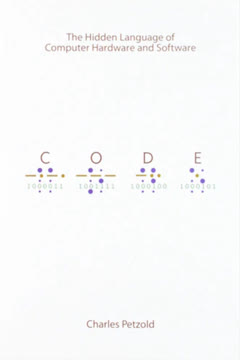Key Takeaways
1. Predictive Data Analytics Transforms Data into Actionable Decisions.
Essentially, all models are wrong, but some are useful.
The core purpose. Predictive data analytics (PDA) is the art of building and using models to make predictions based on historical data patterns. These predictions aren't ends in themselves, but provide crucial insights that empower individuals and organizations to make better, data-driven decisions.
Applications are diverse. PDA is applied across numerous fields to solve real-world problems:
- Business: Price optimization, risk assessment, customer propensity modeling (churn, response).
- Science: Dosage prediction, diagnosis, galaxy classification, ecological modeling.
- Operations: Fault detection, resource allocation, quality control.
From data to decision. The fundamental flow is always: Data -> Insights (via models) -> Decisions. Machine learning is the engine that extracts these patterns and builds the predictive models.
2. Machine Learning Learns Patterns from Data, Guided by Necessary Bias.
Without inductive bias, a machine learning algorithm cannot learn anything beyond what is in the data.
Automated pattern extraction. Supervised machine learning algorithms automatically learn a model mapping descriptive features to a target feature from labeled historical examples (training data). This model is then used to predict the target for new, unseen instances.
The ill-posed problem. ML is fundamentally ill-posed because finite training data usually allows for multiple models consistent with the data. Without additional guidance, the algorithm cannot choose the best model for generalizing to new data.
Inductive bias provides guidance. Machine learning algorithms overcome this by incorporating an inductive bias – assumptions about the characteristics of the desired model.
- Restriction bias: Limits the set of models considered.
- Preference bias: Guides the algorithm to favor certain models (e.g., simpler ones).
This bias is necessary for learning and generalization, but an inappropriate bias can lead to poor models (underfitting or overfitting).
3. Successful Analytics Projects Follow a Structured Lifecycle, Starting with Business Understanding.
Predictive data analytics projects never start out with the goal of building a prediction model.
CRISP-DM provides structure. The Cross Industry Standard Process for Data Mining (CRISP-DM) is a widely used framework for managing PDA projects through six phases:
- Business Understanding: Define the problem and analytics solution.
- Data Understanding: Explore available data sources.
- Data Preparation: Create the Analytics Base Table (ABT).
- Modeling: Build and tune models.
- Evaluation: Assess model performance and suitability.
- Deployment: Integrate the model into operations.
Start with the 'why'. The initial focus must be on the business problem and goals, not the technology. Understanding the business context (situational fluency) is crucial for designing a relevant and useful analytics solution.
Feasibility matters. Before committing, assess the project's feasibility based on data availability and the organization's capacity to utilize the model's insights. A technically accurate model is useless if it cannot be deployed or used effectively.
4. Data Preparation and Exploration are Foundational Steps for Building Effective Models.
Fail to prepare, prepare to fail.
Build the ABT. Predictive models require data organized into an Analytics Base Table (ABT) – a flat table with descriptive features and a target feature (for supervised learning). This often involves integrating and transforming data from disparate sources.
Design features carefully. Features are concrete representations of domain concepts relevant to the prediction task. They can be raw data or derived through transformations like:
- Aggregates (sums, averages)
- Flags (binary indicators)
- Ratios (relationships between values)
- Mappings (converting types, e.g., binning continuous data)
Handling time dimensions (observation/outcome periods) and legal constraints (anti-discrimination, data privacy) are critical during feature design.
Explore and clean the data. Before modeling, thoroughly explore the ABT using data quality reports (summary statistics, visualizations) to understand feature characteristics and identify issues like:
- Missing values
- Irregular cardinality
- Outliers
Address issues caused by invalid data immediately; note issues from valid data for potential handling during modeling.
5. Decision Trees Learn by Iteratively Partitioning Data Based on Information Gain.
Information is the resolution of uncertainty.
Tree-based decision making. Decision trees are intuitive models that make predictions by following a sequence of tests on descriptive features, structured as a tree. Each non-leaf node represents a test, branches represent outcomes, and leaf nodes represent predictions.
Information gain guides splitting. Algorithms like ID3 build trees top-down, selecting the feature that provides the most "information" about the target feature at each step. Information gain, often based on Shannon's entropy, measures how well a feature splits the data into purer subsets with respect to the target.
Handling complexity and data types. Extensions allow decision trees to handle:
- Continuous descriptive features (splitting on thresholds).
- Continuous target features (regression trees, predicting means, minimizing variance).
- Overfitting (tree pruning, removing branches that fit noise).
Decision trees are interpretable and can model feature interactions, but can struggle with high-dimensional data or concept drift.
6. Similarity-Based Learning Predicts by Finding and Leveraging Nearest Neighbors.
When I see a bird that walks like a duck and swims like a duck and quacks like a duck, I call that bird a duck.
Predict based on similarity. Similarity-based methods, like the k-Nearest Neighbor (k-NN) algorithm, predict the target for a new instance by finding the most similar instances in the training data and using their target values (e.g., majority vote or average).
Feature space and distance. Similarity is measured by distance in a multi-dimensional feature space where each descriptive feature is an axis. Common distance metrics include:
- Euclidean distance (straight-line distance).
- Manhattan distance (sum of absolute differences).
- Cosine similarity (angle between vectors, useful for sparse data).
- Mahalanobis distance (accounts for feature covariance).
Data normalization is crucial to prevent features with larger scales from dominating distance calculations.
Handling noise and efficiency.
- k-NN: Using the k nearest neighbors (k>1) reduces sensitivity to noisy individual instances.
- Efficiency: Indexing data structures like k-d trees speed up finding neighbors in large datasets.
Similarity-based methods are intuitive and adaptable to concept drift (lazy learning), but can be slow for large datasets and sensitive to irrelevant/redundant features (curse of dimensionality).
7. Probability-Based Learning Predicts Likelihoods by Applying Bayes' Theorem.
When my information changes, I alter my conclusions. What do you do, sir?
Update beliefs with evidence. Probability-based methods use Bayes' Theorem to calculate the probability of a target feature value given the observed descriptive features (evidence). This involves updating prior beliefs about target likelihoods based on the likelihood of the evidence occurring given each target value.
Bayes' Theorem: P(Target | Evidence) = P(Evidence | Target) * P(Target) / P(Evidence). The goal is to find the target value with the Maximum A Posteriori (MAP) probability.
Naive Bayes simplifies. The Naive Bayes model assumes all descriptive features are conditionally independent given the target feature. This "naive" assumption simplifies calculations dramatically, making the model compact and robust to high dimensionality and sparse data, despite potentially inaccurate probability estimates.
Bayesian Networks model dependencies. Bayesian Networks use a graph structure to represent conditional independence relationships between subsets of features, offering a more flexible and potentially more accurate approach than Naive Bayes, especially when causal relationships are known. They can handle missing data gracefully through probabilistic inference.
8. Error-Based Learning Finds Optimal Models by Minimizing Prediction Errors.
Ever tried. Ever failed. No matter. Try again. Fail again. Fail better.
Learn by reducing mistakes. Error-based learning trains parameterized models (like linear regression) by iteratively adjusting model parameters (weights) to minimize the difference (error) between the model's predictions and the true target values in the training data.
Gradient Descent optimizes weights. The gradient descent algorithm finds the optimal weights by starting with random values and repeatedly taking small steps in the direction of the steepest decrease on the error surface (defined by the error function, e.g., sum of squared errors).
- Learning rate: Controls the step size.
- Weight initialization: Affects convergence speed and stability.
Modeling complex relationships.
- Categorical targets: Logistic regression uses a sigmoid function to map linear outputs to probabilities for binary classification. Multinomial logistic regression extends this for multiple classes (often using one-vs-all).
- Non-linear relationships: Basis functions transform inputs to allow linear models to capture non-linear patterns.
- Support Vector Machines (SVMs): Find the hyperplane that maximally separates classes, often using kernels to handle non-linear separation.
Error-based models are powerful and well-understood, but can be sensitive to outliers and require careful tuning of parameters and potentially complex feature engineering (basis functions).
9. Deep Learning Uses Layered Networks to Learn Complex Representations from Data.
A map is not the territory it represents, but, if correct, it has a similar structure to the territory, which accounts for its usefulness.
Brain-inspired architecture. Deep learning uses artificial neural networks (ANNs) composed of layers of interconnected neurons. These networks learn by adjusting the strength of connections (weights) between neurons, inspired by biological learning.
Depth enables representation learning. Deep networks (multiple hidden layers) learn hierarchical representations of the input data. Earlier layers extract simple features, and later layers combine them into more complex ones, allowing the network to model highly complex, non-linear functions.
Backpropagation trains networks. The backpropagation algorithm, combined with gradient descent, is the standard method for training ANNs. It calculates how much each neuron contributed to the network's error (blame assignment) and uses this to update weights.
Addressing training challenges:
- Vanishing/Exploding Gradients: Using ReLU activation functions and careful weight initialization (Xavier, He) helps stabilize gradients in deep networks.
- Overfitting: Techniques like early stopping (monitoring validation error) and dropout (randomly dropping neurons during training) prevent models from memorizing training data noise.
Deep learning excels at complex tasks with large datasets (images, text, audio) by automatically learning powerful feature representations, but requires significant data and computational resources and can be challenging to train effectively.
10. Reinforcement Learning Agents Learn Optimal Behavior by Maximizing Cumulative Rewards through Interaction.
That all of what we mean by goals and purposes can be well thought of as maximization of the expected value of the cumulative sum of a received scalar signal (reward).
Learn by doing. Reinforcement learning (RL) trains an intelligent agent to learn optimal behavior in an environment by taking actions, receiving immediate rewards (positive or negative), and adjusting its strategy to maximize the total cumulative reward over time.
States, Actions, Rewards, Policy, Value. Key components include:
- States: Representations of the environment at a given time.
- Actions: Choices the agent can make in a state.
- Rewards: Immediate feedback after an action.
- Policy: The agent's strategy for choosing actions in states.
- Value Function: Estimates the expected future cumulative reward from a state or state-action pair.
Temporal-Difference Learning. TD learning (like Q-learning and SARSA) is a model-free approach that learns the value function iteratively by bootstrapping – updating estimates based on other estimates and immediate rewards, without needing a full model of environment dynamics (transition probabilities).
Deep Reinforcement Learning. Combining deep neural networks with RL (e.g., Deep Q Networks - DQN) allows agents to handle environments with vast state spaces (like video games) by using the network to approximate the value function, overcoming the limitations of tabular methods.
11. Rigorous Model Evaluation is Essential to Estimate Performance and Ensure Usefulness.
The most important rule in evaluating models is not to use the same data sample both to evaluate the performance of a predictive model and to train it.
Estimate real-world performance. Model evaluation assesses how well a trained model is likely to perform on new, unseen data after deployment. This requires using data samples separate from the training data.
Experimental designs:
- Hold-out sampling: Split data into training, validation (for tuning), and test sets. Simple, but requires large datasets.
- k-Fold Cross Validation: Divide data into k folds, train k models using k-1 folds, test on the remaining fold, and average results. Better for smaller datasets.
- Out-of-Time Sampling: Use data from a later time period for testing, relevant for time-series data.
Performance measures vary. The choice of metric depends on the problem type and goals:
- Categorical: Misclassification rate, confusion matrix (TP, TN, FP, FN), precision, recall, F1 measure, average class accuracy (especially for imbalanced data), ROC curves (AUC), K-S statistic, profit matrices.
- Continuous: Mean Squared Error (MSE), Root Mean Squared Error (RMSE), Mean Absolute Error (MAE), R2 coefficient.
Monitor after deployment. Concept drift (changes in data patterns over time) can make models stale. Monitor performance, output distributions (stability index), or feature distributions to detect when retraining is needed. Comparative experiments with control groups can assess the business impact of a deployed model.
12. Choosing the Right Machine Learning Approach Depends on the Problem, Data, and Business Context.
The ability to select the appropriate machine learning algorithm (and hence inductive bias) to use for a given predictive task is one of the core skills that a data analyst must develop.
No single best algorithm. The "No Free Lunch" theorem states that no single algorithm performs best on all possible problems. The optimal choice is contingent on the specific characteristics of the task.
Matching approach to problem:
- Interpretability needed: Decision trees, linear regression.
- Complex non-linear relationships: Deep learning, SVMs with kernels, regression with basis functions.
- High-dimensional/sparse data: Naive Bayes, SVMs, Deep Learning.
- Sequential data: Recurrent Neural Networks (RNNs), LSTMs.
- Control tasks/learning by interaction: Reinforcement Learning.
- Finding hidden structure: Unsupervised learning (Clustering).
Matching approach to data: Consider data volume, velocity, variety (types of features), and veracity (quality, missing values, outliers, imbalance). Some algorithms handle certain data issues better than others.
Matching approach to business: Consider deployment constraints (speed, hardware), maintenance needs (retraining frequency), and the value placed on different types of prediction errors (profit matrix). The most useful model is one that effectively addresses the business problem within its operational constraints.
Last updated:
Review Summary
Fundamentals of Machine Learning for Predictive Data Analytics receives high praise from readers, with an average rating of 4.37/5. Reviewers commend its comprehensive introduction to machine learning, clear explanations, and practical examples. It's particularly recommended for beginners and students. The book covers CRISP-DM methodology, algorithm implementation, and includes case studies. Some readers find certain sections challenging, especially those with less mathematical background. Overall, it's considered an excellent resource for understanding machine learning concepts and their real-world applications.
Similar Books







Download PDF
Download EPUB
.epub digital book format is ideal for reading ebooks on phones, tablets, and e-readers.






